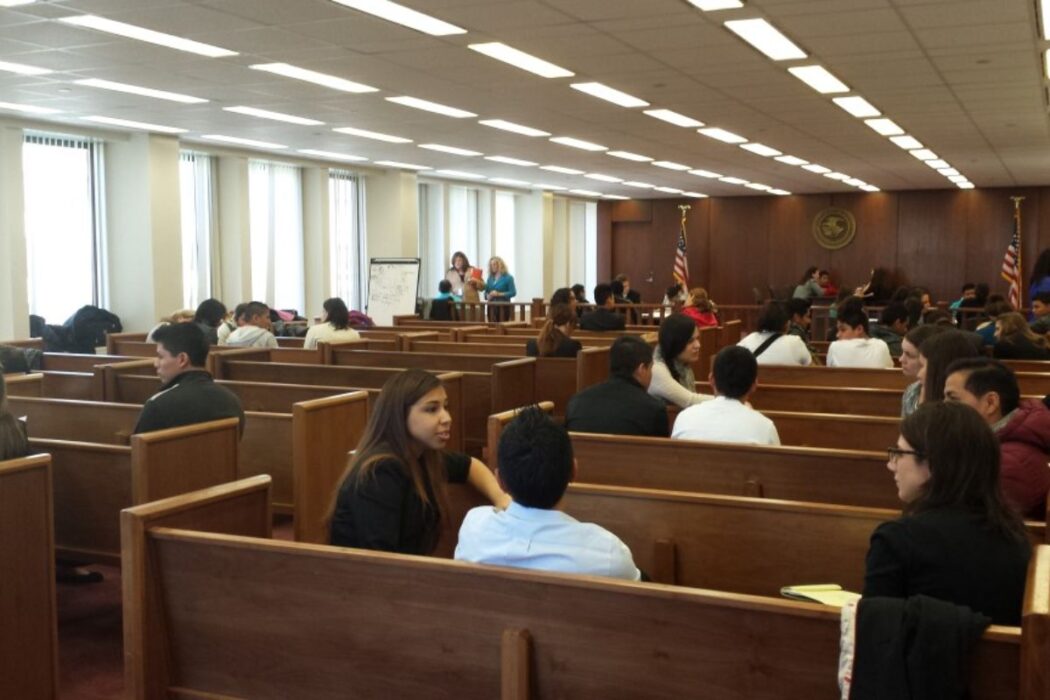Complete Guide to Immigration Court: Status, Locations, Procedures, and More
Navigating the U.S. immigration system can be complex and overwhelming. Whether you are a defendant in an immigration case, a legal representative, or just someone seeking information, understanding how immigration courts work and where to find specific case details is crucial. This article will provide a comprehensive overview of various aspects of the immigration court system, including how to check immigration court case status, send additional information, and understand court procedures. We’ll also explore specific immigration court locations and how to prepare for hearings.
What is Immigration Court?
Immigration courts are part of the U.S. Department of Justice’s Executive Office for Immigration Review (EOIR). The courts are responsible for adjudicating cases involving individuals who are in the U.S. illegally or who are seeking relief from deportation, such as asylum or adjustment of status. Immigration judges in these courts make determinations about whether individuals will be removed from the country or granted permission to stay.
How to Check Immigration Court Case Status?
If you’re involved in an immigration court case, it’s important to stay updated on your case status. EOIR Immigration Court offers an online system called EOIR Automated Case Information where you can check the status of your case by entering the alien registration number (A-number) and hearing information. This is a simple way to see your upcoming court dates, the status of your case, and whether there have been any updates.
For more detailed updates, you can also contact your immigration attorney, or reach out directly to the court where your case is being heard.
How to Send Additional Information to Immigration Court
If you need to send additional documentation or evidence to the immigration court, it is important to follow the proper procedure to ensure that your documents are received and considered. To submit information:
- Check the Court’s Instructions: Different courts may have varying requirements for submitting documents. Always review the court’s guidelines on submitting evidence, declarations, or letters.
- Use Correct Address: Ensure you send the information to the correct address for your specific court. For example, if your case is being heard in the Chicago Immigration Court, address your documents to that court’s location.
- Send By Certified Mail: For proof of submission, use certified mail or another method that provides a receipt of delivery. This ensures that the court receives your information and you have a record.
- Submit Through Your Attorney: If you are represented by a lawyer, they can help submit the information to the court on your behalf.
Supreme Court Case: Elonis v. United States
Do Hawaiians Go Toward Water: A Cultural Study
Immigration Court Locations
Immigration courts are spread out across the U.S. in various cities. Some of the most commonly known immigration court locations include:
- Chicago Immigration Court – One of the busiest courts in the country, dealing with a high volume of cases. It is located in the LaSalle DF Immigration Court building.
- Buffalo Immigration Court – Handles cases in the New York area, including asylum and deportation hearings.
- Orlando Immigration Court – Serves the Florida region, handling cases from various Florida counties.
- San Francisco Immigration Court – Located in California, this court processes immigration cases for individuals residing in the western U.S.
- Miami Immigration Court – A major court in Florida where individuals facing deportation or other immigration issues in the southern part of the state are heard.
- Atlanta Immigration Court – Serving the Georgia area, this court handles a wide range of immigration cases, including asylum claims and deportation hearings.
- New York Immigration Court – Located in the heart of the city, this court is responsible for a high number of cases from the New York metropolitan area.
- Boston Immigration Court – A busy immigration court that handles cases from Massachusetts and the surrounding New England area.
- Manassas Immigration Court – Situated in Virginia, it deals with immigration cases within the state and surrounding regions.
- Supreme Court Texas Immigration Law – Although not an immigration court itself, Texas Immigration Law may be involved in the interpretation and enforcement of immigration-related cases that reach the Supreme Court of the United States.
How to Change Your Address with Immigration Court
It’s important to keep the immigration court updated with any changes to your address. If you move, you must file a Change of Address form (Form AR-11) with both the U.S. Citizenship and Immigration Services (USCIS) and the immigration court handling your case. Failure to notify the court about your address change may result in missed hearings and potential deportation orders.
Sending a Declaration to Immigration Court
A declaration can be a powerful tool in an immigration case. This is a sworn statement, often from the person facing immigration issues or a witness, that supports your case. Declarations are typically submitted to the court to provide context or additional evidence, particularly in cases like asylum or requests for cancellation of removal.
To submit a declaration, you must:
- Ensure the declaration is signed and notarized.
- Follow the court’s specific requirements for submitting declarations.
- Provide copies to both the court and opposing counsel, if applicable.
Immigration Court Practice Manual
The Immigration Court Practice Manual is a comprehensive guide to the procedures and practices followed by immigration judges and the EOIR. It outlines how to prepare for hearings, submit documents, and understand the legal process. It is essential for individuals or attorneys involved in immigration proceedings to familiarize themselves with this manual to ensure compliance with court rules and procedures.
Frequently Asked Questions (FAQ)
- How can I find my immigration court date?
You can check your immigration court date by using the EOIR Automated Case Information system or contacting your immigration attorney. You can also call the court directly. - Can I get a lawyer to represent me in immigration court?
Yes, you are allowed to hire an attorney to represent you in immigration court. If you cannot afford one, some programs offer pro bono (free) legal services. - What should I do if I miss my immigration court hearing?
Missing a hearing can result in an automatic removal order. If you miss a hearing, contact your attorney immediately or try to reach the court to explain your situation and request a rescheduled hearing. - How do I send documents to the immigration court?
You can send documents to the immigration court by mailing them to the court’s address, making sure to follow the court’s guidelines. Certified mail is recommended to ensure proof of submission. - What happens at a Master Calendar Hearing?
A Master Calendar Hearing is the first step in the immigration court process where the immigration judge will hear the charges against the individual and set future dates for hearings. - Where can I find legal resources for my immigration case?
Resources are available through websites like LawHelp.org, the American Immigration Lawyers Association (AILA), or through legal aid services in your area.
Conclusion
Immigration courts are a critical part of the U.S. immigration system, handling cases that impact millions of people each year. By understanding how to access case information, communicate with the court, and seek legal assistance, you can navigate the immigration process more effectively. Always stay informed about your rights and responsibilities and, if necessary, consult with an immigration attorney to ensure the best possible outcome for your case.
Important Reminder: The process can be complex and may involve multiple hearings and procedural steps, so always ensure that you are following the correct procedures and keeping the court informed of any changes.

